The Berlinische Galerie is showing works by the artist and interior designer Ruth Hildegard Geyer-Raack from the 1920s to the 1950s until mid-April. Selected works are presented in the permanent exhibition of the house.
Image above: Ruth Hildegard Geyer-Raack, Pattern design for fabric or wallpaper, around 1930, © Sybille Geyer-Lehmann
Ruth Hildegard Geyer-Raack (1894-1975) was an interior architect, muralist and designer known far beyond Berlin during the Weimar Republic. She specialised in high-quality and sophisticated interior design. Her matter-of-fact, elegant designs harmonised opposing modern furnishing styles such as Bauhaus and Art Deco. In addition to archive materials, the Berlinische Galerie is presenting for the first time in its permanent exhibition an original fabric from the “Vereinigte Werkstätten”, 12 selected sample designs for fabrics and wallpapers as well as 15 photographs of realised interior designs from its own collection.

Works exhibited
In her early works, Ruth Hildegard Geyer-Raack combines traditional floral motifs with geometric abstraction. Her large-scale wall paintings in private and public interiors, which have survived photographically, were already exceptional at the time of their creation. The cheerful fantasy worlds inspired by nature contributed to a special, warm and modern living atmosphere.
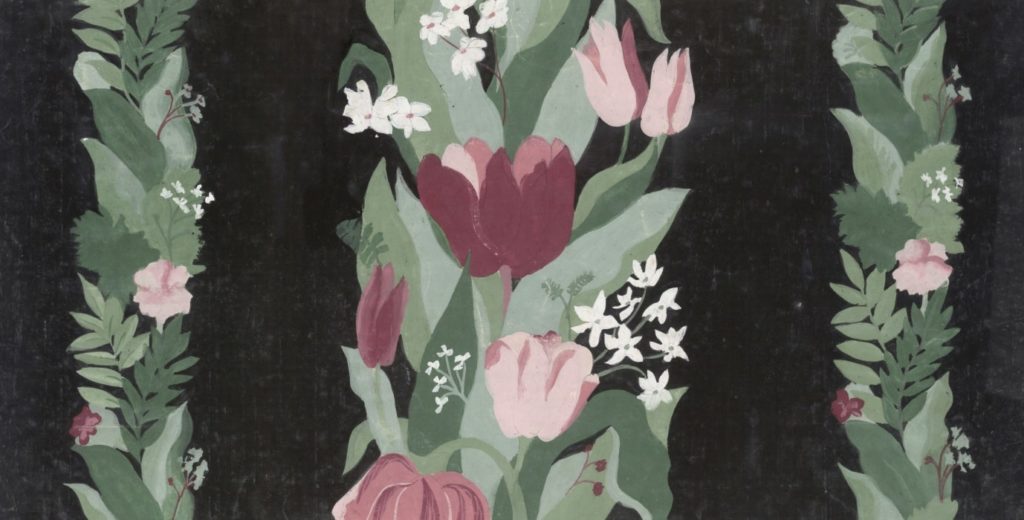
Documentary photographs and the exhibition brochure of the Cologne “Internationale Raumausstellung” (IRA) 1931 represent the high point of her professional career: Alongside renowned innovative architects of diverse styles such as Bruno Paul, Adolf Loos, Le Corbusier and Marcel Breuer, she was the only woman to present her own design proposals there, using the example of the lady’s living room and bedroom.
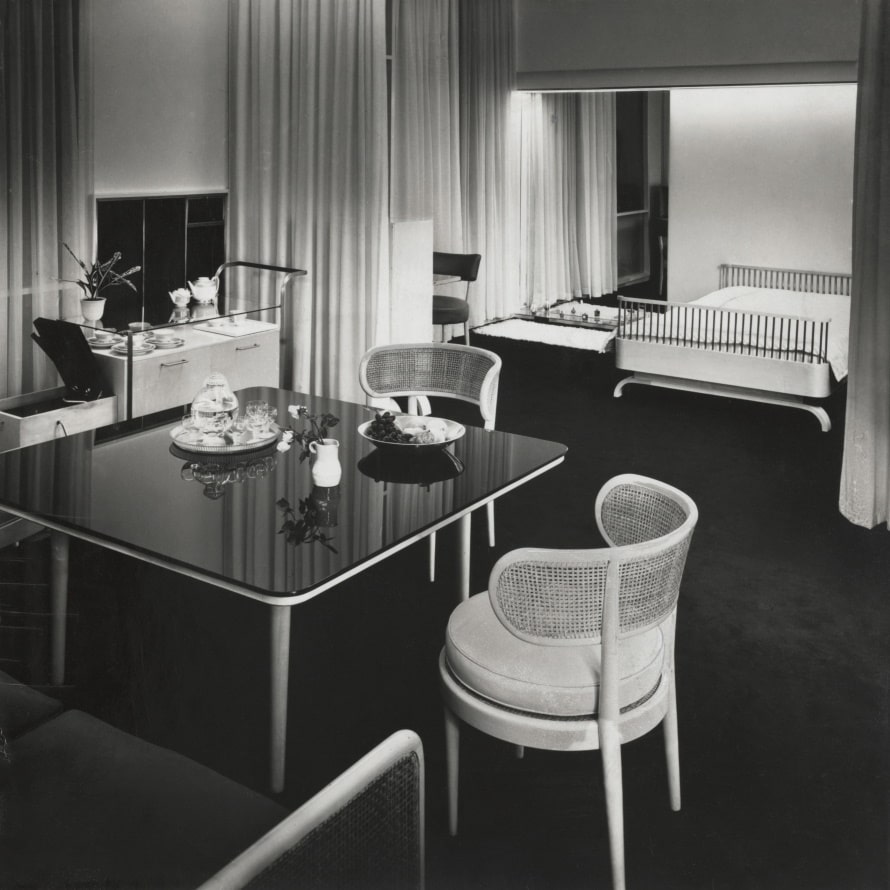
Selected coloured pattern designs for wallpaper and fabrics from the post-war period reveal that Geyer-Raack went with the design ideas of the time without abandoning her personal, soft and modern language of form. In the Galerie Bremer, a culturally important meeting place in West Berlin, she presented a collection of shelves documented in black-and-white photographs, the characteristic feature of which is striking slants.
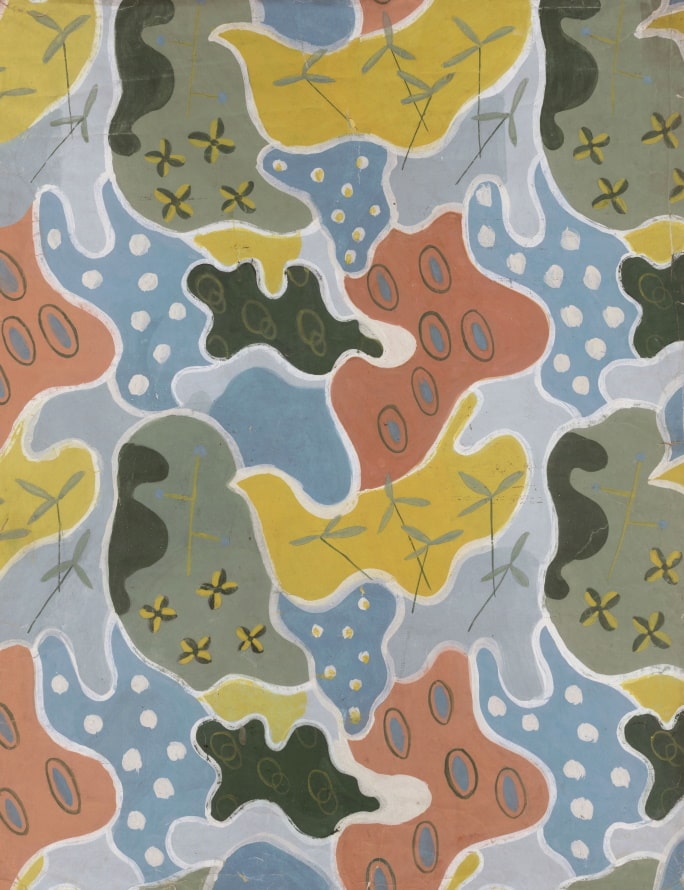
For the quick and inexpensive serial production of fabrics and wallpapers, she designed simplified patterns of circles, triangles or linear structures. To avoid a cool austerity, she also used curved thin lines and combined them with still restrained, friendly and warm shades.
Biography
Ruth Gertrud Hildegard Raack was born on 16 June 1894 in Nordhausen am Harz. Her family’s move brought her to Berlin in 1913. Here she studied painting at the “Unterrichtsanstalt” of the Staatliches Kunstgewerbemuseum. Since 1907, this school had been directed by the architect and furniture designer Bruno Paul (1874-1968), with whom the artist later also worked professionally. In 1920/21 she took part in summer courses at the Bauhaus in Weimar.
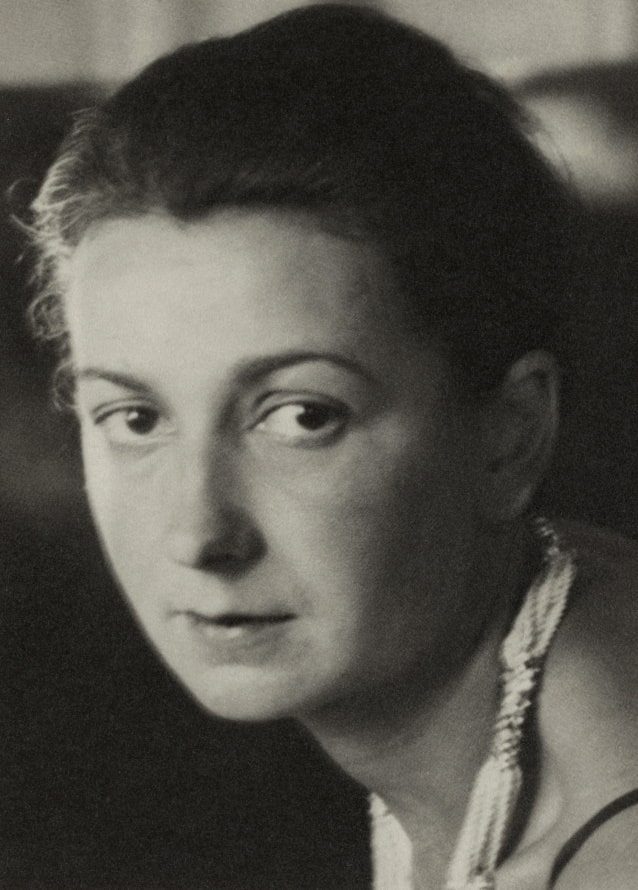
Two years after her marriage to the government councillor Hugo Wilhelm Hermann Geyer (1884-1975) on 2 September 1922, she opened her own studio in Berlin under her new name Geyer-Raack. In 1925 she became a member of the Deutscher Werkbund and in 1928/29 an employee of the Deutsche Werkstätten Hellerau. Until the 1930s she travelled several times to Paris, then the stronghold of the Art Deco style, for study purposes. There she met the architect and Hungarian-born André Sivé (birth name: András Szivessy), whose furniture designs she complemented with her murals in exhibitions.
A far-reaching journalistic presence from 1928 onwards in well-known trade magazines such as “Innendekoration”, “Dekorative Kunst” or “Das Ideale Heim” brought Geyer-Raack numerous commissions. She created interior designs for country houses, public buildings and passenger ships. She also designed fabrics and wallpapers for companies such as “Deutsche Werkstätten Textilgesellschaft” (DeWeTex), “Gebr. Rasch” and “Zimmer & Rohde”.
She became nationally known as the artistic director of the “International Space Exhibition” in Cologne. There she showed a diverse cross-section of current living ideas from the international architectural avant-garde.
With the onset of the world economic crisis and mass unemployment, there was a lack of buyers for sophisticated interior art. In addition, Hitler’s rise to power after 1933 tightened the art policy framework and blocked the way for an internationally open-minded, modern interior design in Germany. After the Second World War, Geyer-Raack worked primarily for the booming textile, wallpaper and furniture industries.
Until her death in Berlin on 19 March 1975, however, she was unable to repeat her successes from around 1930.
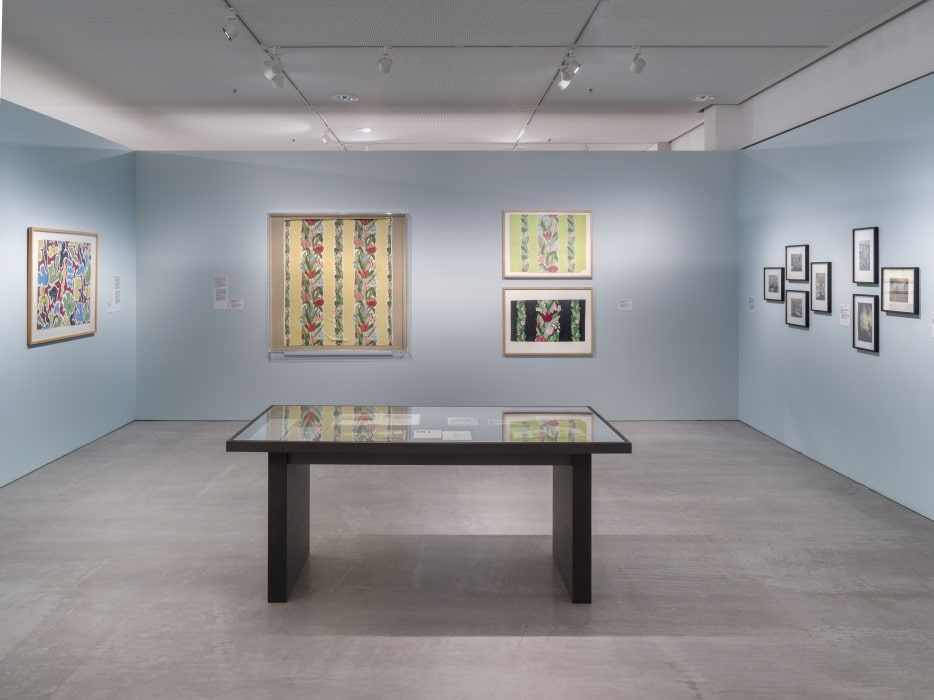
Works by the artist are now represented in renowned collections, including the BauhausArchiv Berlin, the Kunstgewerbemuseum Dresden, the Neue Sammlung für angewandte Kunst in Munich, the Wallpaper Museum Kassel and the Art Institute of Chicago.
WHEN?
Wednesday, 12 January – Monday, 18 April 2022
Wed – Mon 10am – 6pm
Tue closed
WHERE?
Berlinische Galerie
Landesmuseum für Moderne
Kunst, Fotografie und Architektur
Alte Jakobstraße 124–128
10969 Berlin-Kreuzberg
COSTS?
Admission 10 EUR, reduced 6 EUR
Different prices for special exhibitions are possible.






